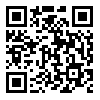1. Andrews N, Brandon-Kelsch N. Current dental surface disinfection protocols and a review of the new one minute surface disinfectants CaviCide1 and CaviWipes1. Inside Dent Assist. 2013; 9(3):46-47 [
Article]
2. Valian A, Shahbazi R, Farshidnia S, Tabatabaee F. Evaluation of the Bacterial Contamination of Dental Units in Restorative and Peridontics Departments of Dental School of ShahidBeheshti University of Medical Sciences. J Mash Dent Sch. 2014;37(4): 345-56. [In Persian] [
Article]
3. Azari RM, Ghadjari A, MassoudiNejad MR, FaghihNasiree N. Airborne microbial contamination of dental units. Tanaffos. 2008;7(2):54-57. [
Article]
4. Taheri J, BakianianVaziri P, Fallah F, NikKerdar N. Assessment of the efficacy of BIB forte in disinfection of dental instruments. J Dent Sch. 2010; 27 (4):179-186 [In Persian] [
Article]
5. Ghosh S, Mallick SK. Microbial biofilm: contamination in dental chair unit. Ind Med Gaz. 2012; 145(10):383-387.
6. Motta RH, Ramacciato JC, Groppo FC, Pacheco Ade B, de Mattos-Filho TR. Environmental contamination before, during, and after dental treatment. Am J Dent. 2005;18(5):340-4. [
PubMed]
7. Napoli C, Marcotrigiano V, Teresa Montagna M. Air sampling procedures to evaluate microbial contamination: a comparison between active and passive methods in operating theatres. BMC Public Health. 2012; 12:594. [
PubMed]
8. Holt, J.G, Krieg, N.R. Bergey's Manual of Determinative Bacteriology. 9th ed .Philadelphia: The Williams & Wilkins Co, Baltimore; 2009. [
Article]
9. Kasra-Kermanshahi R, Kazemi MJ, Taherzadeh M. Laboratory exercises in microbiology with safety precaution and culture specific and fastidious bacteria. 1st ed. Yazd: Islamic Azad university; 1389. p.254-255. [In Persian]
10. Cassat JE, Lee CY, Smeltzer MS. Investigation of Biofilm Formation in Clinical Isolates of Staphylococcus aureus. Methods Mol Biol. 2007; 391:127–144. [
PubMed]
11. Aminnezhad S, Kasra-Kermanshahi R. Antibiofilm activity of cell-free supernatant from Lactobacillus casei in Pseudomonas aeruginosa. KAUMS Journal(FEYZ). 2014; 18 (1):30-37. [In Persian] [
Article]
12. Stepanoic S, Vukoic D, Dakic I, Branislava S, Svabic-Vlahovic M. A modified microtiter-plate test for quantification of Staphylococcal biofilm formation. J Microbiol Methods. 2000; 40(2):175-179. [
PubMed]
13. Klindworth A, Pruesse E, Schweer T, Peplies J, Quast C, Horn M, Oliver Glöckner F. Evaluation of general 16S ribosomal RNA gene PCR primers for classical and next-generation sequencing-based diversity studies. Nucl.Acids Res(NAR). 2013; 41(1): e1. [
PubMed]
14. Dordet-Frisoni E, Dorchies G, De Araujo C, Talon R, Leroy S. Genomic diversity in Staphylococcus xylosus. Appl Environ Microbiol. 2007; 73(22):7199–7209. [
Article]
15. Azih A, Enabulele I. Species distribution and virulence factors of coagulase negative Staphylococci isolated from clinical samples from the University of benin teaching hospital. JNSR. 2013; 3(9):38-43. [
Article]
16. Al-Mathkhury HJF, Flaih MT, Al-Ghrairy Z KA. Pathological study on Staphylococcus xylosus isolated from patients with urinary tract infection. JNUS. 2008; 11(2):123-130. [
Article]
17. Laborda PR, Fonseca FSA, Angolini CFF, Oliveira VM, Souza AP, Marsaioli AJ. Genome sequence of Bacillus safensis CFA06, isolated from biodegraded petroleum in Brazil. GenomeA. 2014; 2 (4). [
PubMed]
18. Vela J, Hildebrandt K, Metcalfe A, Rempel H, BittmanSh, Topp E, et al. Characterization of Staphylococcus xylosus isolated from broiler chicken barn bioaerosol. PSJ. 2012; 91(12):3003-3012. [
PubMed]
19. Jain K, Parida Sh, Mangwani N, R Dash H, Das S. Isolation and characterization of biofilm-forming bacteria and associated extracellular polymeric substances from oral cavity. Ann Microbiol. 2013; 63(4):1553-1562. [
Article]






